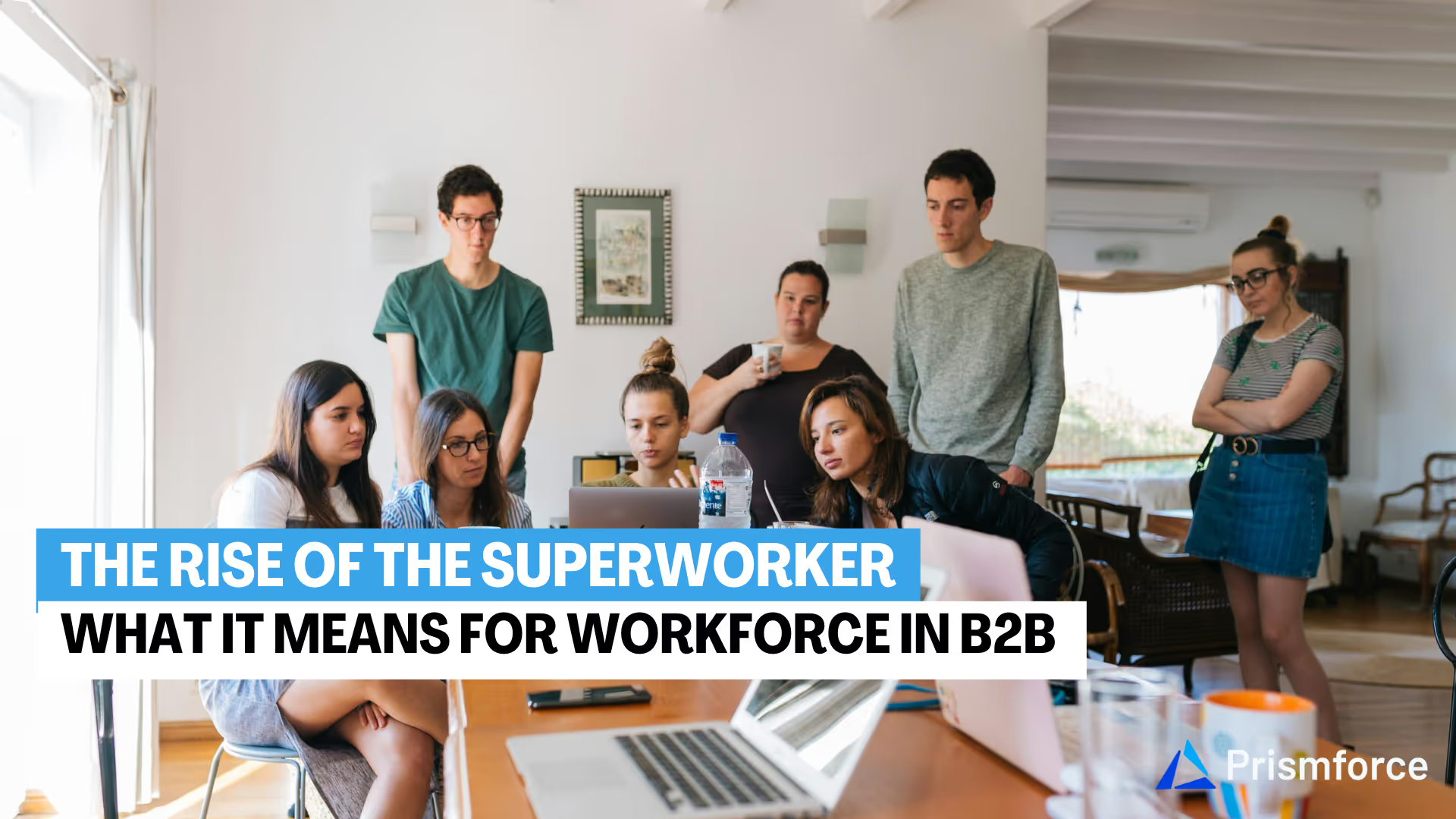
Businesses face the constant challenge of keeping their workforce equipped with the right skills. As new technologies emerge and industry standards evolve, the skills that were relevant yesterday might not hold the same value tomorrow. This reality has made upskilling and reskilling more than just buzzwords—they have become essential strategies for any organization aiming to stay competitive and ensure long-term success.
But what exactly do upskilling and reskilling entail, and how do they differ? More importantly, how can these strategies be effectively leveraged to engage your workforce, enhance productivity, and drive maximum impact? In this article, we will explore the nuances between upskilling and reskilling, discuss their importance in the modern workplace, and provide actionable insights on how to implement these initiatives to benefit both your employees and your organization.
Understanding Upskilling and Reskilling
Organizations increasingly focus on two key strategies to maintain a competitive edge: upskilling and reskilling. These approaches have an impact on workforce management and talent development, enabling companies to adapt to changing industry demands and technological advancements.
Defining Upskilling
Upskilling involves employees learning new information and skills to enhance their performance in their current roles. This process optimizes employee efficiency and productivity while helping them navigate change. By deepening an employee's abilities, upskilling essentially creates specialized workers. For instance, an IT technician taking certification courses on newly released software is an example of upskilling.
Defining Reskilling
Reskilling, on the other hand, refers to learning new abilities to take on a different job role or function. It allows businesses to retain exceptional employees even if their original job or department has been eliminated. Reskilling prepares current workers for different roles, often in response to changing market demands or technological advancements. For example, as artificial intelligence eliminates certain positions, companies can reskill employees for alternative in-demand jobs with similar skill requirements.
{{blog-widget}}
Key Differences
The main distinction between upskilling and reskilling lies in the end goal of the learning process. Upskilling advances talent on a linear path, enhancing an employee's existing skill set and advancing them along their current career path. In contrast, reskilling connotes lateral movement, often involving learning skills outside of the worker's existing skill set.
While both approaches contribute to employee growth and organizational adaptability, they serve different purposes:
- Upskilling creates more specialized workers, optimizing performance in current roles.
- Reskilling produces more versatile employees, preparing them for different positions within the company.
Both strategies offer significant benefits, including bridging the digital divide, enhancing competitiveness, and contributing to talent retention.
As the World Economic Forum predicts, more than one billion people will need reskilling globally by 2030 due to technological transformations. This underscores the critical importance of both upskilling and reskilling in shaping the future workforce and ensuring organizational success in an ever-evolving business landscape.
Benefits of Upskilling for Employees and Employers
Upskilling has become a crucial strategy for both employees and employers in today's rapidly evolving job market. This process of teaching workers new skills applicable to their current roles and delivering continuous education offers numerous advantages for individuals and organizations alike.
Career Advancement Opportunities
Upskilling creates genuine employee loyalty by demonstrating an organization's commitment to its human capital. It makes talent look forward to what's next and creates a deeper sense of purpose within the organization. According to a survey by Gallup-Amazon, 61% of employees consider upskilling an important reason to stay at their jobs. By providing learning opportunities, companies can build an internal talent pipeline, saving them from having to find external candidates for senior positions.
Increased Job Satisfaction
Investing in employee development has a significant impact on job satisfaction. The Gallup survey also revealed that 71% of employees report increased job satisfaction due to training and development opportunities.
Improved Productivity and Innovation
Upskilling has a direct impact on productivity and innovation within organizations. According to a survey by McKinsey, 91% of employers reported increased productivity from upskilling training. Employees with enhanced skills are more likely to be creative, innovative, and productive. This productivity can easily translate into other valuable attributes that benefit the business.
By standardizing and automating repetitive tasks, upskilled employees can reduce errors, improve productivity, and focus on more strategic activities. For instance, finance employees who learn to build data roadmaps and customized data visualizations can help streamline balance sheets and other finance processes.
Upskilling also promotes a culture of innovation. When workers feel empowered and are given the opportunity to improve their skills, they are more likely to come up with new ideas and solutions. This culture of continuous learning and innovation is essential for businesses to stay competitive in today's rapidly changing market.
Strategies for Effective Upskilling
Implementing successful upskilling strategies is crucial for organizations to address the widening skills gap and prepare their workforce for future challenges. To create effective upskilling programs, companies should focus on several key areas.
Identifying Skill Gaps
The first step in effective upskilling is to conduct a comprehensive skills gap analysis. This process helps organizations understand the current capabilities of their workforce and identify areas that need improvement. A well-executed skills gap analysis provides a clear overview of the skills matrix across the entire organization, allowing HR professionals to understand what needs improving and plan future recruitment strategies.
Personalized Learning Plans
Once skill gaps are identified, organizations should develop personalized learning plans for their employees. These plans should align with individual career aspirations and job responsibilities. According to a recent study, personalized learning plans can increase employee productivity by up to 70%. By creating tailored learning paths, companies can ensure that employees develop the specific skills needed to excel in their roles and advance in their careers.
Leveraging Online Courses
Online learning platforms have revolutionized the upskilling process. Companies can take advantage of various online resources to provide flexible and accessible learning opportunities for their employees. Platforms like Coursera, HubSpot Academy, and LinkedIn Learning offer a wide range of courses that can help employees acquire new skills or strengthen existing ones. These platforms allow employees to learn at their own pace and access content on-demand, making it easier to balance work and learning.
Retaining Valuable Employees
Upskilling plays a crucial role in employee retention. By investing in their employees' development, companies demonstrate their commitment to long-term growth and career advancement. In fact, 94% of employees report that they would stay longer at a company that invests in their career development. Implementing upskilling programs not only helps retain valuable talent but also creates a more engaged and motivated workforce.
Adapting to Industry Changes
As industries evolve rapidly, organizations must ensure their upskilling strategies remain relevant. This involves staying current with emerging trends and technologies in the industry. Companies should regularly assess their upskilling programs and adapt them to address new skill requirements. By fostering a culture of continuous learning, organizations can prepare their workforce to navigate future challenges and capitalize on new opportunities.
Implementing Successful Reskilling Programs
Implementing effective reskilling programs is crucial for organizations to adapt to rapidly changing work environments and maintain a competitive edge. Companies are investing significantly in reskilling initiatives, with AT&T spending $1 billion to retrain nearly half its workforce and Accenture investing approximately $1 billion annually to reskill 300,000 employees over a four-year period.
Assessing Transferable Skills
The first step in successful reskilling is identifying transferable skills among employees. These skills are valuable for transitioning from positions with weakening prospects to roles considered on the rise. Companies can leverage various methods to track essential skills for each position, including:
- Internal career follow-ups
- Up-to-date job descriptions
- One-to-one conversations with employees
- Discussions with managers
- Skills assessments
By utilizing these techniques, organizations can gain increased visibility into each employee's concrete responsibilities and skills, enabling better detection of transferable skills from one position to another.
Creating Career Transition Paths
Successful career pathing strategies adopt a competency-based approach, evaluating specific competencies required for each role and identifying necessary skills development for employees transitioning into new positions. Career paths should be personalized for each employee, outlining steps needed to achieve long-term career goals through lateral moves or promotions.
Providing Mentorship and Support
Mentorship programs play a crucial role in reskilling efforts. They pair experienced workers (mentors) with emerging professionals or new hires (mentees), providing regular feedback on work performance, technical skills, and alignment with company culture. Mentorship offers several benefits:
- Relevant content specific to the organization's unique circumstances
- Cost-effectiveness in hiring junior talent
- Lower risks associated with new hires
- Increased employee retention
To implement successful mentorship programs, organizations should incentivize mentor participation, provide adequate support and guidance, and set clear expectations for both mentors and mentees.
Developing Internal Talent Marketplaces
An artificial intelligence-enabled talent marketplace can significantly enhance reskilling efforts. These platforms use AI to match employees to opportunities based on their skills, interests, and aspirations. Benefits of implementing a talent marketplace include:
- Identifying existing employee skills and talent gaps
- Mobilizing talent quickly for urgent projects and critical roles
- Empowering employees to drive their own careers
- Improving access to development opportunities
- Leveraging internal talent for open roles
By utilizing these strategies, organizations can create successful reskilling programs that address the evolving needs of the workforce, ensuring they remain competitive and agile in an ever-changing business landscape.
Creating a Culture of Continuous Learning
Continuous learning has become essential for organizations to remain competitive. It goes beyond mere professional development programs, evolving into a living, breathing entity within organizations that shape how teams approach challenges, adapt to change, and innovate in the face of uncertainty.
Fostering a Growth Mindset
At the core of a continuous learning culture lies the cultivation of a growth mindset. Organizations that actively foster a growth mindset create an environment where challenges are viewed as opportunities for improvement, and failures are seen as stepping stones toward success.
Leadership commitment plays a crucial role in guiding the organization through change. When leaders prioritize continuous learning and model a growth mindset, it sends a powerful message throughout the company. They become advocates for learning, not just as a means of acquiring skills but as a way of thinking and approaching challenges.
Implementing Learning and Development Programs
To establish a robust learning ecosystem, organizations should provide access to various learning resources. This may include setting up internal knowledge-sharing platforms, offering online courses, and organizing regular training sessions and workshops. Encouraging employees to set personal and professional learning goals and supporting them with necessary resources is crucial.
Interestingly, a survey revealed that 77% of employees have knowledge that would benefit their colleagues, but no one has asked them to share it. To tap into this valuable resource, managers should identify department experts and work with them to capture relevant information. This knowledge can then be used to create courses and make them available through the company's learning management system.
Measuring and Rewarding Skill Acquisition
Measuring and rewarding skill acquisition is vital for maintaining momentum in a learning culture. Organizations can integrate skill measurement into daily work, use rubrics for observational assessments, and employ tablets for capturing and tracking skill acquisition as it occurs.
Recognizing and rewarding not just outcomes but also effort and progress toward goals can be powerful motivators. This can be done through formal recognition programs or informal acknowledgments in team meetings. Additionally, providing learning and development rewards, such as paid time off for skill development or funding for external conferences, can drive upskilling and individual career development, benefiting both employees and the organization.
Enable Continuous Upskilling and Reskilling for Your Employees With Prismforce
Upskilling and reskilling are now essential for navigating the changing job market. These strategies are crucial for effective workforce management, talent development, and organizational adaptability. By fostering a culture of continuous learning and tailoring development plans, companies can close skill gaps, boost productivity, and enhance both job satisfaction and employee retention.
However, many organizations struggle with implementation, often lacking the tools to identify skill gaps and create personalized learning paths. This is where Prismforce comes in. As an AI-powered platform, it addresses these challenges, ensuring your workforce stays equipped with the most relevant skills, driving both employee engagement and organizational success.
SkillPrism is at the core of Prismforce's approach to skill management, enabling companies to create a dynamic, AI-powered skill framework that evolves with market demands. SkillPrism empowers organizations to:
- Uncover Hidden Skill Gaps: SkillPrism enables organizations to capture and analyze employee skills, revealing hidden skill gaps and anticipating future skill needs. This proactive insight allows for strategic planning and targeted learning and development initiatives, ensuring your workforce remains ahead of the curve..
- Optimize LMS Investments: Seamless integration with Learning Management Systems (LMS) allows SkillPrism to maximize the value of your existing LMS investments. By recommending relevant courses and tracking employee progress, SkillPrism ensures that learning resources are utilized effectively, driving tangible skill development.
- Measure and Manage Skill Growth: With robust reporting and dashboarding capabilities, SkillPrism provides a clear and comprehensive view of your workforce's skill development. This data-driven insight empowers you to track the effectiveness of your upskilling and reskilling efforts, make informed decisions, and continuously refine your L&D strategies.
Prismforce's CareerPrism complements SkillPrism by providing employees with personalized career paths, fostering a sense of ownership and direction in their development journey. CareerPrism enables employees to:
- Explore Diverse Career Paths: Employees can explore various career paths based on their current skills and competencies. This empowers them to envision their future within the organization and make informed decisions about their professional growth.
- Bridge Skill Gaps with Precision: CareerPrism helps employees identify the specific skills they need to develop to progress in their chosen career paths. This targeted approach ensures that learning efforts are focused and impactful, accelerating their journey towards their goals.
- Monitor Progress and Stay Motivated: Employees can track their progress against their development plans, gaining a sense of accomplishment and staying motivated along the way. This visibility reinforces their commitment to continuous learning and empowers them to take charge of their professional development.
Together, SkillPrism and CareerPrism provide a comprehensive solution that not only addresses immediate skill needs through targeted upskilling and reskilling but also supports long-term employee growth and organizational success.





